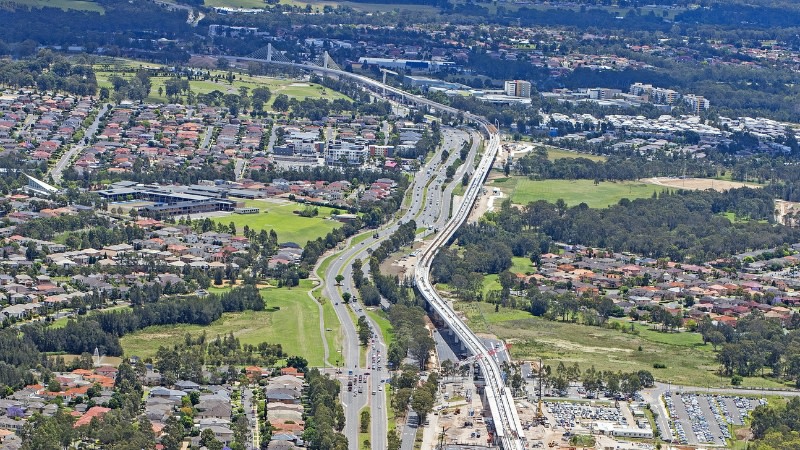Byron Council’s Transparency, Reporting Under Fire

Transparency and the management of conflicts of interest were highlighted as concerns in an audit of a trio of NSW councils and their development application and determination processes.
New South Wales Auditor-General Margaret Crawford investigated Byron Shire Council, Northern Beaches Council, and The Hills Shire Council in the report.
The audited councils were selected by number, value, type and timeframe of development applications determined in 2018-2019, as well as appeals against determinations and local demographics.
The audit avoided councils that had previously been subject to a performance audit.
It focused on whether the selected councils and their staff assessed and determined DAs effectively, given that in the full year 2019-2020, 48,540 development applications were approved by council staff, 668 by councillors, 951 by a local planning panel, and 277 by a regional planning panel.
While much of the audit was largely positive, highlighting acceptable levels of compliance by local authorities and some strong processes and procedures, there were issues raised over conflicts of interest and transparency.
Byron Shire, while credited with establishing clear roles, responsibilities and delegations for assessment and determination of applications, was criticised for issues relating to reporting and transparency.
The audit found that the council did not adequately follow up on outcomes of internal reviews or a process to identify updates to planning legislation and government guidance, and did not have consistent, consolidated procedures for development assessment.
The council, on the NSW north coast, was faulted for not regularly updating its Codes of Conduct to manage risks of conflicts of interests within development assessments, which means staff could run the risk of following inconsistent or outdated advice.
Councillors were not required to declare conflicts of interest at meetings, which the audit said “limits transparency in the process surrounding important decisions outlining the preferred determination forum”.

There was one instance where Bryon Shire Council appeared to not respond to alleged Code of Conduct breaches, saying that it did not meet the requirements of a formal Code of Conduct Complaint.
The audit suggested that Byron Shire did not effectively ensure that delegations for determining DAs were being followed, and that there were some issues with the segregation of duties and gaps in documentation of delegated authority, which is determined based on the estimated cost of works.
A lack of procedures for development assessments and standardisation of processes was highlighted, but the audit said that despite these issues being “regularly identified as a key risk by the council and internal reviews since 2013”, this had not been rectified.
The audit suggested that without standard operating procedures, staff might not be able to perform duties consistently or understand the council’s preferred approach, and may lead to confusion with instructions spread across multiple process maps.
Meanwhile, The Hills Shire Council was commended for establishing a comprehensive governance and risk management framework, undertaking regular internal audits of development assessments, including reviewing completed applications to ensure compliance.
Much like Byron Shire, however, The Hills Shire Council was criticised for some areas where transparency was an issue, mainly managing conflicts of interest. The audit suggested that it could be better at documenting these conflicts within the development application assessment reports to improve transparency.
Like Byron Shire, it does not require staff to disclose conflicts of interest, which reduces transparency, the audit said.

Northern Beaches Council, however, was given a glowing report, which suggested that its approach to managing conflicts promotes transparency and that it has identified development assessment related risks and has put in place controls to mitigate and manage those risks.
This was a result of having implemented an additional framework for planning staff to respond to conflicts of interest, which requires staff to disclose any conflicts as a formal step in assessing applications.
Northern Beaches was lauded for its use of a comprehensive electronic development assessment tool that provides guidance and links to legislation and policy instruments.
However, much like Byron Shire, Northern Beaches does not systematically review the outcomes of assessments, the audit found, and highlighted as an area of improvement.
The Department of Planning and Environment also faced some criticism, with auditors suggesting that the department could do more to facilitate information sharing between panels.
The report also highlighted the changing focuses of the NSW Government as well as the department. A DPE Best Practice Guide from 2019 suggested that councils should be determining 90 per cent of development applications within 40 days.
Full-year reports for 2020 said that determinations were made between 412 days for regional planning panel development applications, and 83 days for applications determined by council staff.

The department was criticised for not fully implementing internal review recommendations to improve delivery and governance as a result
According to 2019-20 data from the DPE, 50,593 local development applications were approved in NSW with an estimated construction value of nearly $34 billion.
Previous reviews and inquiries had identified several significant risks that are present within the processes involved in the assessment and determination of development applications, the report remarked.
These included possible non-compliance with complex legal and policy requirements, potential improper influence from developers and other stakeholders, and perceived lack of transparency within the planning system and with outcomes.













